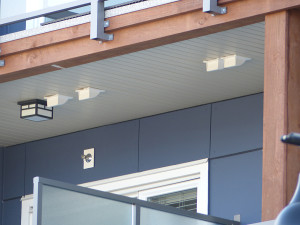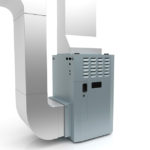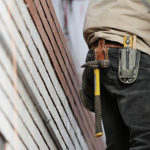 Most of us are concerned with the air we breathe, particularly if we live in polluted urban areas. But how many of us realize that the air in our home and workplaces can be even more toxic?
Most of us are concerned with the air we breathe, particularly if we live in polluted urban areas. But how many of us realize that the air in our home and workplaces can be even more toxic?
Some of the pollutants circulating through buildings’ HVAC systems are not only dangerous to those with compromised immune systems, but also to people with allergies and asthma. Long-term exposure to these irritants can damage health and encourage these chronic conditions in the first place.
Problems with indoor air quality are made worse in wintertime by the lack of clean fresh air entering through open windows. Ironically, increases in energy efficiency have made homes even more airtight and better insulated than ever before. These advancements also result in less drafts and air movement through the building envelope.
Common indoor air pollutants
Airborne carcinogens
Although most of the most dangerous toxins have been banned, known carcinogens such as asbestos and formaldehyde can still be present in many buildings. As well second-hand smoke can easily circulate in multi-family dwellings.
Toxic gases
Carbon monoxide and gasoline fumes can enter from garages and naturally occurring radon can seep in through the basement. Carbon monoxide detectors are essential – this gas can occur as a byproduct of incomplete combustion in a furnace or water heater and is transparent and odorless.
Biological contaminants including mold, bacteria and viruses
The carbon dioxide we exhale can lead to stale air and we can also spread airborne diseases. Toxic black mold can grow in hidden damp areas and then spread as spores in the air potentially leading to life-threatening ailments.
VOCs or volatile organic compounds
These can be given off by new flooring, carpets and window coverings. VOCs are also found in furniture, especially those treated with flame retardants. They are present in oil, gas, coal, building materials, cleaning products and in paints and varnishes.
How to run a clean HVAC system
To reduce the presence of these contaminants there must be proper ventilation, air circulation and a well-functioning HVAC system. Building codes will list necessary air change rates, which are “a measure of the air volume added to or removed from a space (normally a room or house) divided by the volume of the space.” Air change rates are often used as rules of thumb in ventilation design. Systems using radiant heating, including hot water radiators and baseboard heaters, have the disadvantage of not moving air around but benefit from the lack of dirty ductwork that plague forced air systems.
However, forced air can help flush toxins through into a central air filter. In fact, larger HEPA compliant ones can remove 99.97% of all pollutants. But it is extremely important to keep the system clean and running efficiently.
Cold air returns must not be blocked with furniture and clogged with dust and dirt. The flimsy metal ones used in so many homes get bashed by vacuum cleaners that closes the louvered openings. Sturdy plastic ones that are dishwasher safe can replace these. Some come in thicknesses that pair well with baseboards.
Humidity and moisture cause mold and mildew; they can actually increase with the installation of high efficiency furnaces and modern windows. Bringing in fresh outside air is a good idea especially in the utility room (even if high efficiency furnaces don’t call for it) but they must have unrestricted intake vents. A removable screen that can be washed is a great option for these intake vents.
Exhaust fans in kitchens and bathrooms will expel unpleasant fumes and odors. In particular, running bathroom fans whenever showering or bathing is great at reducing humidity and encouraging air circulation.
Provincial programs sometimes subsidize retrofitting but all exhaust vents must be vented correctly to the outside of the building. Soffit vents should lead air away from the building and not allow it to return back inside and all types of vent cap should be durable and easily cleaned.



